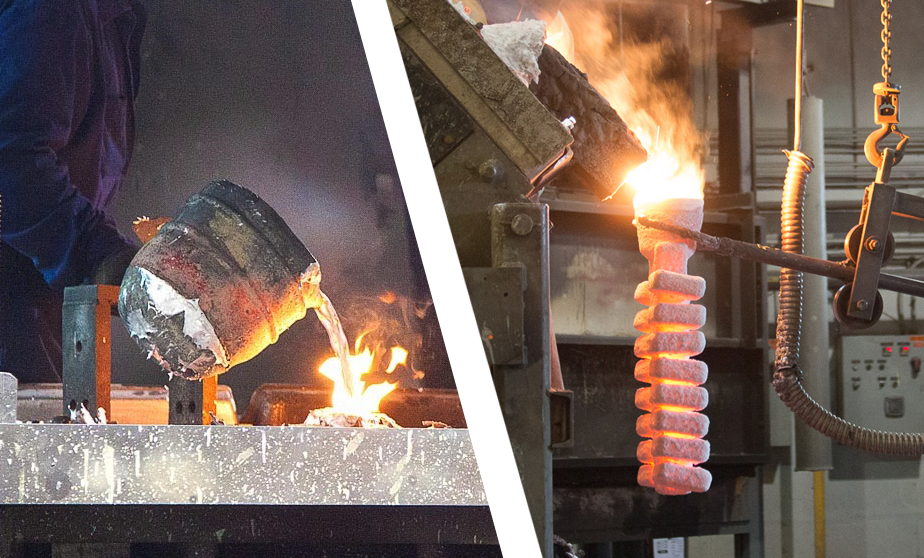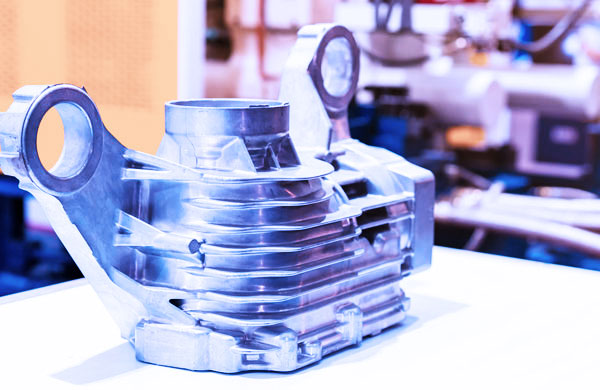The smart Trick of Stahl Specialty Company That Nobody is Discussing
Table of ContentsThe Definitive Guide to Stahl Specialty CompanySome Known Facts About Stahl Specialty Company.An Unbiased View of Stahl Specialty CompanySome Known Details About Stahl Specialty Company How Stahl Specialty Company can Save You Time, Stress, and Money.Some Known Details About Stahl Specialty Company

If you're creating a metal product, you've likely taken into consideration using light weight aluminum as the base product. It has a high strength-to-weight proportion, great deterioration resistance, excellent formability, and visual charm. These elements have actually led to its enhanced appeal recently. Pure light weight aluminum has limited applications, so it is commonly combined with other components, such as silicon, magnesium, and manganese to form alloys.
(AA), based in North America, has actually developed requirements that manage aluminum alloys' structure, properties, and language. There are two types of light weight aluminum alloys wrought and cast.
Some Known Facts About Stahl Specialty Company.
Cast light weight aluminum alloys are made by melting pure light weight aluminum and incorporating it with various other metals while in liquid form. The mix is put right into a sand, pass away, or financial investment mold and mildew. After solidification, the steel is eliminated from its mold. At this stage, it remains in either its last kind or as a billet or ingot for more processing.

The fourth digit, which comes after the decimal point, defines if the alloy is a casting (xxx. Wrought aluminum alloys also start by combining liquified light weight aluminum with other steels. In comparison to cast alloys, nevertheless, they are created into their final form through processes such as extrusion, rolling, and flexing after the metal has actually strengthened right into billets or ingots.
There are several small differences in between functioned and cast aluminum alloys, such as that cast alloys can have much more significant amounts of various other steels than wrought alloys. The most significant distinction between these alloys is the manufacture process via which they will go to deliver the last item. Besides some surface therapies, cast alloys will certainly exit their mold and mildew in nearly the exact solid form preferred, whereas functioned alloys will undergo a number of adjustments while in their solid state.
If you assume that a functioned alloy might be the finest for your project, have a look at some of our short articles that discuss even more concerning specific wrought alloys, such as Alloy 6061 and Alloy 6063. On the other hand, if you think an actors alloy would be better for you, you can find out more concerning some cast alloys in our Alloy 380 and Alloy 383 write-ups (coming quickly).
Stahl Specialty Company - An Overview
When picking a light weight aluminum shop for your production needs, it's crucial to research a number of factors. Among one of the most critical facets to take into consideration is the experience and skills of the foundry. Foundries in Missouri. Selecting a shop that has the ideal understanding of the aluminum casting procedure, and the profile to show for it, helps to have an effective result for your job
Having the experience and market knowledge to engineer your spreadings for ideal production and quality results will enhance the task. Making aluminum spreading requires a complex set of processes to achieve the ideal results. When selecting a new light weight aluminum factory to partner with, guarantee they have considerable sector experience and are educated concerning all facets of the light weight aluminum spreading process: design, production, product evaluation, and item screening.
The shop must also have a tried and tested record of providing exceptional items that satisfy or surpass client expectations. Quality control should also be at the top of your list when choosing an aluminum foundry. By dealing with a qualified foundry that follows the standards for high quality control, you can safeguard the honesty of your product and guarantee it satisfies your requirements.
By picking a business who uses solutions that meet or exceed your product needs, you can be sure that your task will certainly be finished with miraculous precision and efficiency. Certain light weight aluminum foundries focus on specific types of making procedures or casting techniques. Various parts require various manufacturing techniques to cast aluminum, such as sand spreading or die spreading.
Indicators on Stahl Specialty Company You Need To Know
Die spreading is the name offered to the procedure of developing complicated steel components via usage of molds of the part, also called dies. The process makes use of non-ferrous steels which do not include iron, such as light weight aluminum, zinc and magnesium, as a result of the preferable homes of the steels such as low weight, higher conductivity, non-magnetic conductivity and resistance to deterioration.
Pass away casting production is fast, making high manufacturing degrees of elements very easy. It generates even more parts than any other procedure, with a high degree of accuracy and repeatability. For more information regarding die spreading and die spreading products made use of at the same time, read on. There are three sub-processes that drop under the classification of die spreading: gravity pass away casting (or permanent mold casting), low-pressure die casting and high-pressure die spreading.
After the purity of the alloy is examined, dies are developed. To prepare the dies for casting, it is important that the passes away are tidy, so that no residue from previous manufacturings remain.
Stahl Specialty Company Fundamentals Explained
The pure metal, also called ingot, is included in the heating system and maintained the molten temperature level of the metal, which is then transferred to the injection chamber and infused right into the die. The stress is then preserved as the steel strengthens. Once the steel solidifies, the cooling procedure begins.
(https://www.merchantcircle.com/stahl-specialty-company1-kingsville-mo#tips)
The thicker the wall of the component, the longer the cooling time due to the amount of indoor steel that also requires to cool down. After the part is fully cooled down, the die halves open and an ejection system presses the component out. Complying with the ejection, the die is shut for the next shot cycle.
The flash is the extra product that is cast during the procedure. This have to be cut off using a trim tool to leave just the primary part. Deburring removes the smaller items, called burrs, after the cutting Going Here procedure. The component is polished, or burnished, to provide it a smooth surface.
See This Report about Stahl Specialty Company

Zinc is one of the most used alloys for die casting due to its lower expense of raw materials. Its rust resistance also enables the parts to be long lasting, and it is one of the much more castable alloys due to its lower melting point.
As mentioned, this alloy is one of the most frequently used, yet produces will, at times, pick aluminum over zinc because of light weight aluminum's production advantages. Light weight aluminum is extremely cost-effective and one of the a lot more flexible alloys. Light weight aluminum is made use of for a variety of different items and sectors anything from home window frames to aerospace materials.